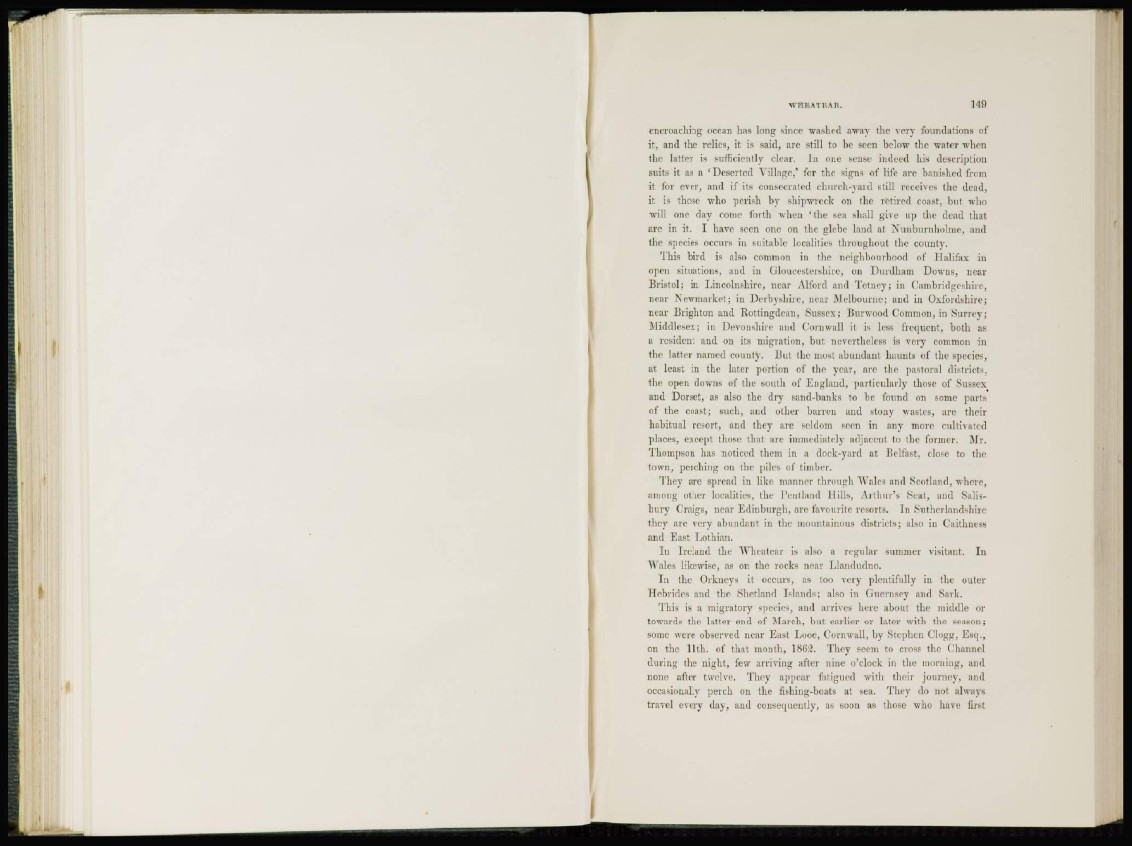
encroaching ocean has long since washed away the very foundations of
it, and the relics, it is said, are still to be seen below the water when
the latter is sufficiently clear. In one sense indeed his description
suits it as a 'Deserted Milage,' for the signs of life are banished from
it for ever, and if its consecrated church-yard still receives the dead,
it is those who perish by shipwreck on the retired coast, but who
will one day come forth when ' t h e sea shall give up the dead that
are in it. I have seen one on the glebe land at Xunburnholme, and
the species occurs in suitable localities throughout the county.
' l h i s bird is also common in the neighbourhood of Halifax in
open situations, and in Gloucestershire, on Durdham Downs, near
Bristol; in Lincolnshire, near Alford and Tetney; in Cambridgeshire,
near Newmarket; in Derbyshire, near Melbourne; and in Oxfordshire;
near Brighton and Eottingdean, Sussex; Burwood Common, in Surrey;
Middlesex; in Devonshire and Cornwall it is less frequent, both as
a resident and on its migration, but nevertheless is very common in
the latter named county. But the most abundant haunts of the species,
at least in the later portion of the year, are the pastoral districts,
the open downs of the south of England, particularly those of Sussex
and Dorset, as also the dry sand-banks to be found on some parts
of the coast; such, and other barren and stony wastes, are their
habitual resort, and they are seldom seen in any more cultivated
places, except those that are immediately adjacent to the former. Mr.
Thompson has noticed them in a dock-yard at Belfast, close to the
town, perching on the piles of timber.
They arc spread in like manner through Wales and Scotland, where,
among other localities, the Pcntland Hills, Arthur's Seat, and Salisbury
Craigs, near Edinburgh, arc favourite resorts. In Sutherlandshire
they are very abundant in the mountainous districts; also in Caithness
and East Lothian.
In Ireland the Whcatcar is also a regular summer visitant. In
Wales likewise, as on the rocks near Llandudno.
I n the Orkneys it occurs, as too very plentifully in the outer
Hebrides and the Shetland Islands; also in Guernsey and Sark.
This is a migratory species, and arrives here about the middle or
towards the latter end of March, but earlier or later with the season;
some were observed near East Looe, Cornwall, by Stephen Clogg, Esq.,
on the 11th. of that month, 18(i2. They seem to cross the Channel
during the night, few arriving after nine o'clock in the morning, and
none after twelve. They appear fatigued with their journey, and
occasionally perch on the fishing-boats at sea. They do not always
travel every day, and consequently, as soon as those who have first